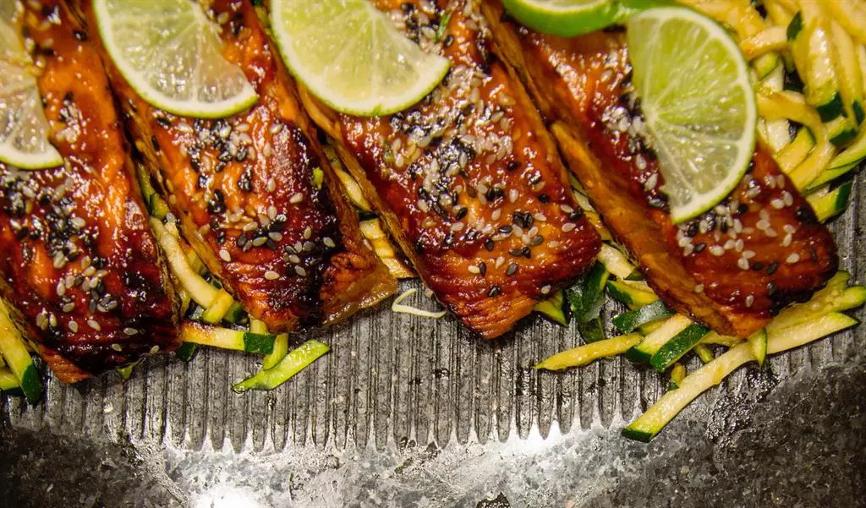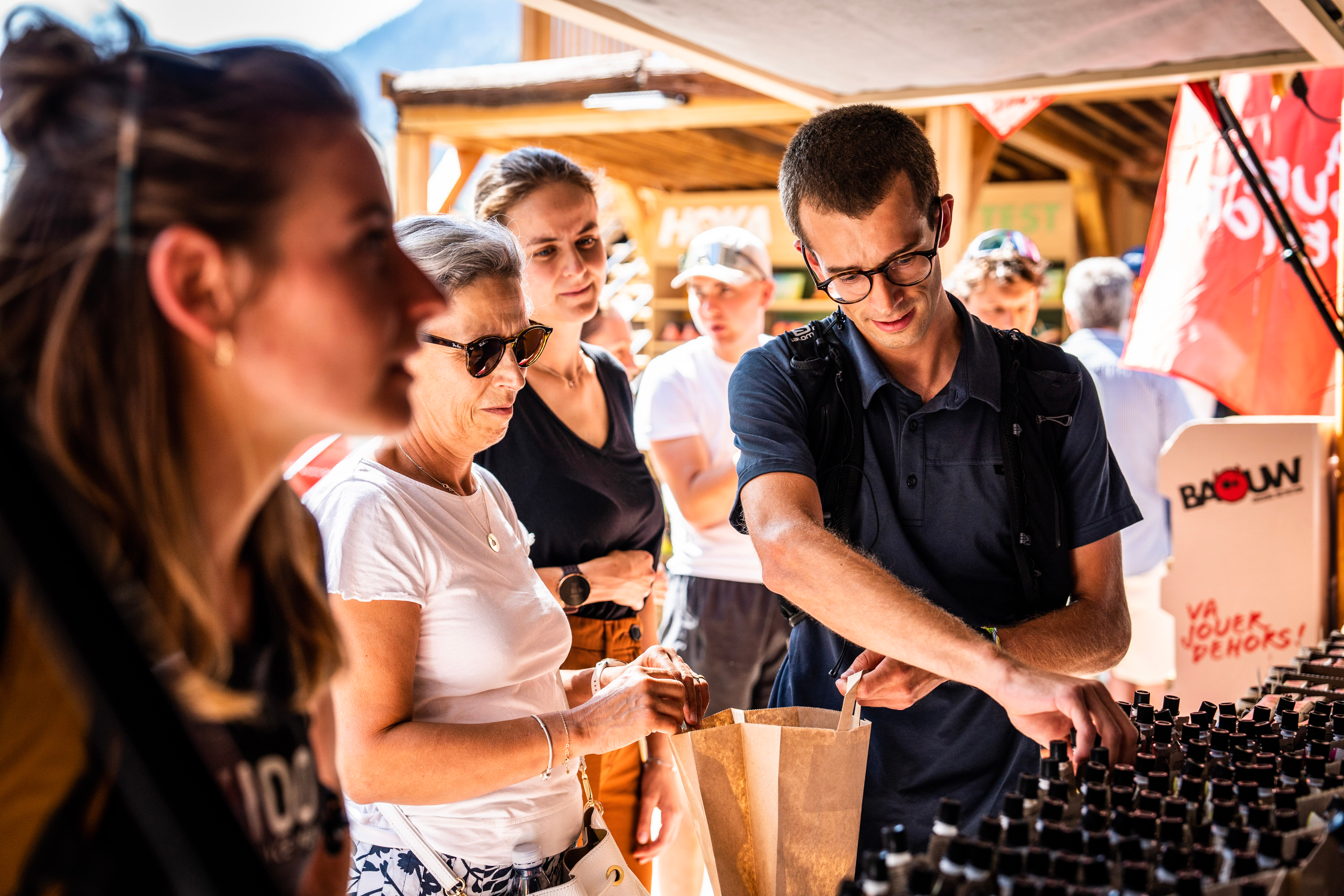What do UTMB winner Xavier Thévenard, Grand Raid de la Réunion winner, Benoît Girondel,and the All Blacks have in common? They owe part of their performance to an adapted and personalised ketogenic diet. But does that mean you have to start? Can you learn from them? What do you stand to gain from adapting your diet slightly to the principles of the ketogenic diet, even if you don't do any sport? Find out here! Where we talk about ketogenic, ketodiet, ‘low carb high fat’, paleo diet...
Baouw-Blog: ‘We often hear about the ketogenic diet, but what exactly is it?
Benoît Nave : ‘ In a nutshell, following a ketogenic diet means increasing your intake of good fats, while limiting your carbohydrate intake. When sportspeople follow a ketogenic diet, they try to improve the efficiency of natural ketogenesis*. When you exercise for long periods, there's always a moment when your glycogen reserves are depleted to the point of exhaustion. You then have to use other energy sources. The body knows what to do. With the ketogenic diet, we try to exploit this quality. Because, even in the sharpest athletes, fat reserves are very high. Ketogenesis is the result of a transformation of the body: it has been ‘turned into a machine for using fat as a source of energy’.
Baouw-Blog: ‘What are the benefits of a ketogenic diet for an athlete?
Benoît Nave : « Il faut bien savoir une chose : quand on mange lors d'un effort à intensité moyenne ou élevée, on ne nourrit pas le muscle. On ne nourrit que le cerveau, contrairement à un effort de plus faible intensité. C’est l’une des clés de la compréhension du phénomène. À l’effort, il est IMPOSSIBLE de nourrir le muscle. Tu vas alimenter ton cerveau et tes organes nobles (cœur, reins, dans une moindre mesure). Ce qui est essentiel. Quand tu te présentes sur la ligne de départ, tu dois faire avec ton stock de réserves énergétiques. Ces valises de glycogène – très limitées - sont celles prioritairement utilisées à l’effort. L’idée, c’est de compter sur la substance présente en plus grande quantité dans le corps, les lipides. Le régime cétogène permet d’améliorer notablement le rendement de cette filière lipidique. Autre élément intéressant de ce régime : les taux de cétone légèrement augmentés ont des effets stimulants sur le plan cérébral. Tu as plus de lucidité, plus de clairvoyance. Tu ressens beaucoup moins les classiques coups de barre successifs, sur les épreuves d’ultra. »
Fish and vegetables form part of the basis of a ‘paleo’ or ketogenic ‘diet’ (diet not meaning ‘lose weight’ but ‘eating routine’).
Baouw-Blog: ‘We also hear a lot about the “paleo diet”. Is it the same as a ketogenic diet?
Benoît Nave: ‘It's the “base” on which the ketogenic diet is based. I like it when people can understand how their bodies work: you have to realise that man is the ‘dominant’ animal on earth because, basically, he's the toughest animal. Man was originally extremely hardy. They were... before their diet became considerably richer in carbohydrates over the centuries. And considerably more in recent decades. That's why we need to eat the most raw, least processed foods possible.
Ketogenic diet, paleo diet (hunter-gatherers), “low carb high fat”, do all these words ring a bell? They may refer to different ways of eating, but they have a lot in common.
Baouw-Blog: “Is this lifestyle and ketogenic diet only for great ultra-endurance champions like Xavier Thévenard or Benoît Girondel?”
Benoît Nave: “Until very recently, we thought it was aimed at ultra-endurance athletes, not necessarily at the highest level. But now we realize that it can be adapted - and I stress the word “adapted” - to all endurance sports. Not just ultra sports. The latest studies show that you can burn up to twice as much fat by switching from a classic diet to a ketogenic diet, at the same level of intensity. On a marathon, your resources are bound to be exhausted. That's what the marathon wall is all about! In all races of 2 hours or more, the limiting factor in maintaining intensity is the ability to supply the muscles with the same amount of energy. To run at a certain speed, you need a certain amount of energy. This can be provided by either carbohydrates or fats. For the same physical condition, the ketogenic diet will double the use of lipids. To run a 20 km race, an untrained person will run at 80% on the glycolytic pathway. On a ketogenic diet, they will run at 60%. This means they can continue to run at the same speed, but for longer. Because - once again - the main limiting factor is your glycogen reserves. A diet that promotes ketogenesis is particularly suited to long efforts, 4 hours or more, when reserves will be depleted before the end of the event.”
« On peut se lancer comme cela ? C’est sans danger ? »
Benoît Nave: “There are real health benefits to adopting it in many circumstances - if you don't go overboard, of course. You mustn't do it on your own, without supervision, otherwise you'll soon be up to no good. On the other hand, you can be inspired, provided you don't go to extremes and don't apply the rules to the letter. For example, there's little risk in reducing your carbohydrate intake and increasing your intake of healthy fats*. You have to do it gradually. Don't suddenly switch to the ketogenic diet. The body's adaptation to the use of lipids means that you'll be able to eat less sugar during exercise, and eat much less often. However, eating sweet foods during exercise is a limiting factor, as taste quickly becomes saturated. And above all, after a while, the stomach can no longer assimilate the food, which is why so many people give up. A body over-saturated with carbohydrates during exercise (gels, etc.) will react by vomiting. It's easy to see the limits this can pose. And we know that gastric problems are one of the number 1 factors in runners quitting”. *The right fats: avocado, oilseeds, and oil as long as you choose it well. We'll help you choose the right oils to put on your plate here. Interview by Myriam Cornu with Benoît Nave, holder of the Micronutrition Alimentation Prévention Santé European University Diploma (Paris Descartes University). To find out more, read the book by Mélanie Pontet Salot, journalist for the
KETOGENIC DIET: THE BASICS FOR EVERYONE
- One of the best times to implement the ketogenic approach? Breakfast.
- No carbohydrates in the morning!
- In general, beware of anything industrialized. Watch out for sugars that aren't really sugars at all. Ready-made salad dressings, for example, are full of them...
- Don't drink anything sweet. Sodas, fruit juices: get rid of them all! Beware: some plant milks contain added sugar.
- Eliminate refined sugars. All bread. Absolutely get rid of sandwich bread.
- Gradually replace traditional carbohydrates with more raw, lower-glycemic-load foods: switch from supermarket pasta to quinoa, lentils, etc.










